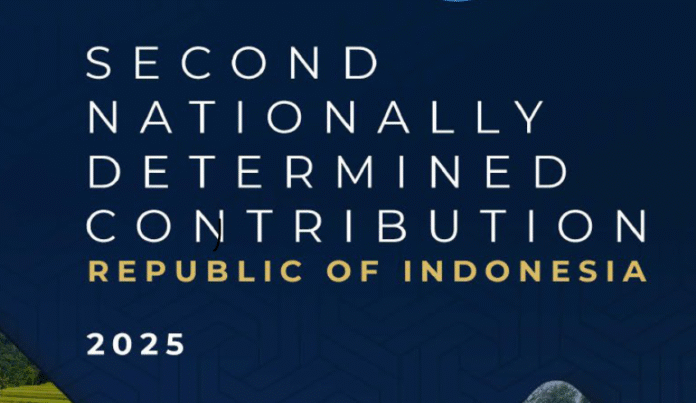Ecobiz.asia — The Indonesian government has officially submitted its Second Nationally Determined Contribution (Second NDC) to the Secretariat of the United Nations Framework Convention on Climate Change (UNFCCC), reaffirming its long-term commitment to global climate action.
The document marks a major policy shift from a business-as-usual (BAU) baseline to an absolute greenhouse gas (GHG) emission target, using 2019 as the reference year.
In a letter dated October 23, 2025, Deputy for Climate Change and Carbon Governance at the Ministry of Environment and Indonesia’s National Focal Point for the UNFCCC, Ary Sudijanto, said the Second NDC reflects Indonesia’s strengthened ambition and sustained commitment to the global effort to address climate change.
“It provides quantifiable information on reference points, timeframes, and implementation approaches, as well as enhanced measures to ensure transparency, inclusivity, and fairness in light of our national circumstances,” Ary wrote in his letter to UNFCCC Executive Secretary Simon Stiell, as seen by ecobiz.asia on Monday (Oct 28).
Indonesia’s Second NDC maintains its emission reduction target of 31.89% unconditionally and up to 43.20% with international support by 2030. The new submission introduces an updated, more transparent methodology based on absolute emissions levels.
The government expects emissions to peak around 1.34–1.49 billion tons of CO₂ equivalent by 2030, before gradually declining toward net-zero emissions by 2060 or earlier.
The Second NDC aligns with Indonesia’s long-term development vision under the National Long-Term Development Plan 2025–2045 (RPJPN) and the Long-Term Strategy for Low Carbon and Climate Resilience (LTS-LCCR 2050), as well as the Asta Cita framework in the 2025–2029 Medium-Term Development Plan (RPJMN).
Several key regulations underpin the implementation, including Government Regulation No. 33/2023 on energy conservation, Presidential Regulation No. 112/2022 on renewable energy acceleration, and Presidential Regulation No. 110/2025 on carbon pricing instruments.
The forestry and land-use (FOLU) sector remains the backbone of Indonesia’s mitigation efforts, targeting FOLU Net Sink 2030, the restoration of 2 million hectares of peatland, and rehabilitation of 8.3 million hectares of degraded land.
The energy sector is directed toward a renewable energy share of 19–23% by 2030 and 70% by 2060.
The Second NDC also emphasizes stronger integration between mitigation and adaptation measures, including through the Climate Village Program (ProKlim), enhancement of the National Registry System (SRN) linked to the Indonesia Stock Exchange for carbon trading, and adoption of the just transition principle to ensure an equitable and inclusive energy transition.
Indonesia estimates total investment needs at about USD 472.6 billion through 2035 to implement the Second NDC, funded partly through the national budget and managed by the Environmental Fund Management Agency (BPDLH). ***






